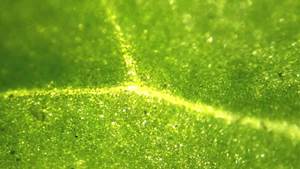



Date:03/11/16
 Forget bomb-sniffing dogs, we can now use spinach to detect explosives. Scientists have implanted the leafy greens with tiny tubes that let them sense when an explosive is nearby and even alert someone by email.
Forget bomb-sniffing dogs, we can now use spinach to detect explosives. Scientists have implanted the leafy greens with tiny tubes that let them sense when an explosive is nearby and even alert someone by email.
This is all part of the field of "plant nanobionics," which is about embedding plants with tiny nanomaterials that basically give them superpowers. In today’s study, published in the journal Nature Materials, MIT researchers put sensors into the part of the spinach leaf where photosynthesis happens. These sensors can detect a chemical that is often in landmines and other explosives: nitroaromatic compounds.
For this process to actually work, the spinach plant has to absorb the chemicals through its roots. That happens if the nitroaromatic compounds are in the groundwater. From the roots, the chemicals travel to the leaves in about 10 minutes, where they activate the plant’s sensors.
These sensors emit a fluorescent signal that can be seen from an infrared camera nearby. This camera is hooked to a tiny computer, so it can send an email alerting someone about this change.
This same technique can be used with almost any living plant, researchers say. The same team has also programmed spinach to pick up the chemical dopamine. In the future, researchers could "teach" plants and trees to warn us if there are any pollutants nearby. It could be much more convenient than installing complicated manual sensors, especially because plants are everywhere around us — including in your backyard or lining up your city streets.
Nanobionic spinach plants can detect explosives
 Forget bomb-sniffing dogs, we can now use spinach to detect explosives. Scientists have implanted the leafy greens with tiny tubes that let them sense when an explosive is nearby and even alert someone by email.
Forget bomb-sniffing dogs, we can now use spinach to detect explosives. Scientists have implanted the leafy greens with tiny tubes that let them sense when an explosive is nearby and even alert someone by email.This is all part of the field of "plant nanobionics," which is about embedding plants with tiny nanomaterials that basically give them superpowers. In today’s study, published in the journal Nature Materials, MIT researchers put sensors into the part of the spinach leaf where photosynthesis happens. These sensors can detect a chemical that is often in landmines and other explosives: nitroaromatic compounds.
For this process to actually work, the spinach plant has to absorb the chemicals through its roots. That happens if the nitroaromatic compounds are in the groundwater. From the roots, the chemicals travel to the leaves in about 10 minutes, where they activate the plant’s sensors.
These sensors emit a fluorescent signal that can be seen from an infrared camera nearby. This camera is hooked to a tiny computer, so it can send an email alerting someone about this change.
This same technique can be used with almost any living plant, researchers say. The same team has also programmed spinach to pick up the chemical dopamine. In the future, researchers could "teach" plants and trees to warn us if there are any pollutants nearby. It could be much more convenient than installing complicated manual sensors, especially because plants are everywhere around us — including in your backyard or lining up your city streets.
Views: 426
©ictnews.az. All rights reserved.Similar news
- Azerbaijani project to monitor disease via mobile phones
- Innovative educational system to be improved under presidential decree
- NTRC prolongs license of two TV and radio organizations for 6 years
- Azerbaijan establishes e-registry for medicines
- Azerbaijani museum introduces e-guide
- Nar Mobile opens “Nar Dunyasi” sales and service center in Siyazan city
- International conference on custom electronic services held in Baku
- OIC secretary general to attend COMSTECH meeting in Baku
- Azerbaijan develops earthquake warning system
- New law to regulate transition to digital broadcasting in Azerbaijan
- Azerbaijani State Social Protection Fund introduces electronic digital signature
- Intellectual traffic management system in Baku to be commissioned in December
- Tax Ministry of Azerbaijan started receiving video-addresses
- World Bank recommends Azerbaijan to speed up e-service introduction in real estate
- Azerbaijan to shift to electronic registration of real estate





















